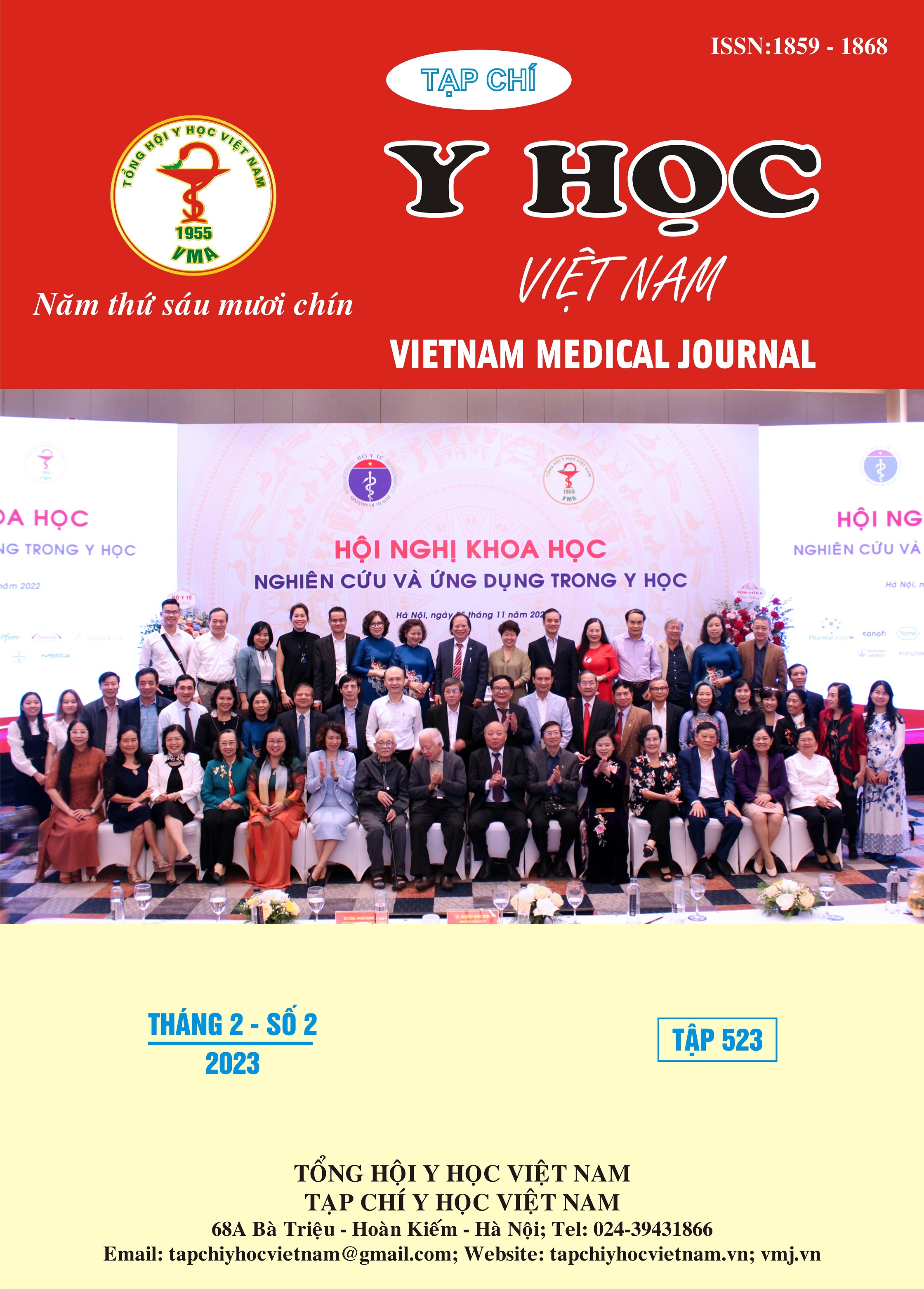X-RAY AND MAGNETIC RESONANCE IMAGING CHARACTERISTICS IN SURGICAL PATIENT CAUSED BY MULTILEVEL DEGENERATIVE CERVICAL STENOSIS
Main Article Content
Abstract
Objectives: Describe the clinical characteristics of patients with multilevel cervical stenosis due to spinal degeneration. Material and Method: A retrospective study was conducted on 31 patients diagnosed with deformed-multilevel cervical stenosis indicated operative trearment by the cervical pedicle screw fixation combined with laminectomy technique in Bach Mai hospital from january 2018 to June 2020. Results: On standard cervical spine X-ray, 87.1% patients have images of cervical spondylosis from grade II or higher, 38.7% cases have images of cervical spine instability on dynamic cervical spine X-ray films. On Magnetic Resonance Imaging, the average number of levels of spinal stenosis is 3.42 ± 0.56, the mean SAC index at the narrowest position is 6.45 ± 1.397 mm. 87.1% patients have severe spinal stenosis (≥ 60%). The two most frequent places for cervical stenosis are C4-C5 and C5-C6 with 100% and 96.8%, respectively. Conclusion: Cervical spine standard X-ray and dynamic X-ray are crucial in diagnosis of cervical spine degeneration and spine instability. Magnetic Resonance Imaging has essential role in assessing the position and degree of degenerative cervical discs leading to cervical spine stenosis.
Article Details
Keywords
Cervical stenosis; X-ray; MRI; cervical spine instability.
References
2. Christopher D. Witiw MD. Five things to know about Degenerative cervical myelopathy. CMAJ. 2016;189(3):1 - 4 doi:10.1503/cmaj.151478
3. Davies BM. Degenerative cervical myelopathy. The BMJ. 2018;5:1 - 4. doi:10.1136/bmj.k186
4. Hồng NTÁ. Hẹp ống sống cổ: Giá trị MRI qua khảo sát 300 trường hợp. Tạp chí y học Việt Nam,. 1999;6:126 - 129.
5. Kellgren JH BJ. Atlas of standard radiographics, vol II. Blackwell Scientific, Oxford. 1963;vol II.
6. A.White A. Biomechanical analysis of clinical stability in the cervical. Clinical Orthopaedics and Related Research. 1975;109:85 - 96. doi:10.1097/00003086-197506000-00011
7. Hua Zhou M, Zhong-jun Liu. Laminoplasty with lateral mass screw fixation for cervical spondylotic myelopathy in patients with athetoid cerebral palsy. Medicine (Baltimore). 2016;95:39.
8. Akinobu Suzuki aMDD. Patterns of Cervical Disc Degeneration: Analysis of Magnetic Resonance Imaging of Over 1000 Symptomatic Subjects. Global Spine Journal. 2018;8(3):254 - 259.
9. M. Teraguchi NY, H. Hashizume osteoarthritis and cartilage, Prevalence and distribution of intervertebral disc degeneration over the entire spine in a population-based cohort: the Wakayama Spine Study. 2014.
10. Matsunaga S., Kukita M., Hayashi K., et al. Pathogenesis of myelopathy in patients with ossification of the posterior longitudinal ligament. J Neurosurg. Mar 2002;96(2 Suppl):168-72.


